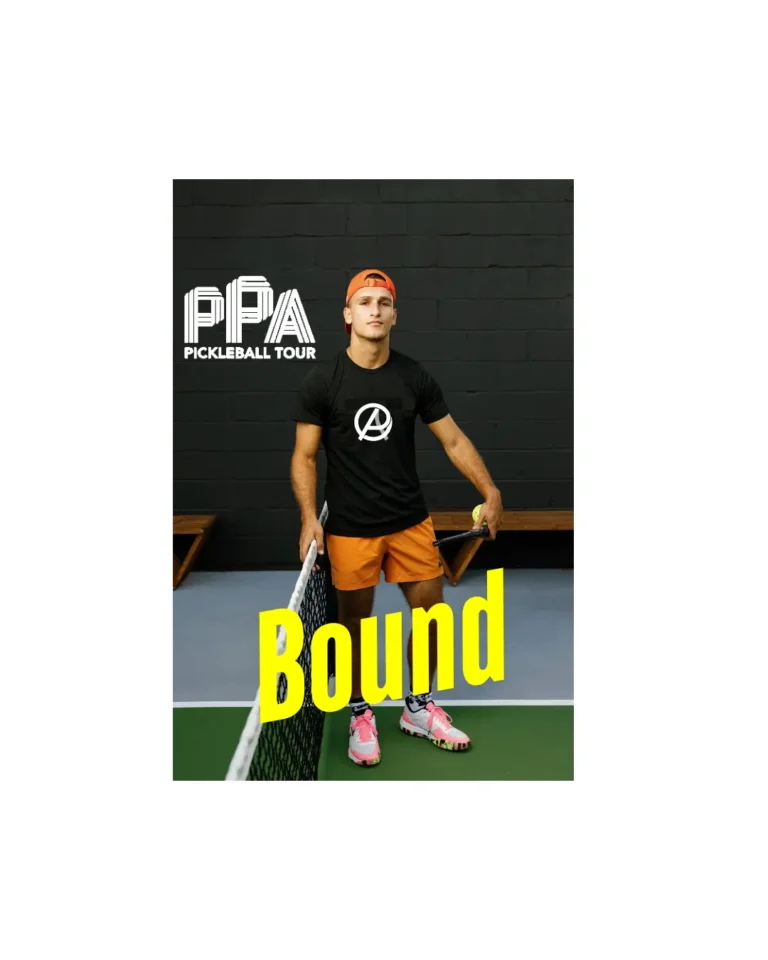Footwork in Pickleball | Techniques for Agility & Balance
How to Improve Your Footwork in Pickleball
Improving my footwork in pickleball has been a challenging but rewarding journey. Stepping onto the pickleball court, I often feel a mix of excitement and determination. Standing at 6’1″ and weighing 275 lbs, recovering from an Achilles rupture a year ago has certainly impacted my mobility. After watching videos of myself playing and discussing with my son, AJ, it became clear that my footwork needed improvement. I found myself letting the ball get too deep, making contact behind my right knee, a habit that was hindering my game. Although I know what I need to do, implementing these changes consistently during play is still a work in progress. I’m sharing my journey in hopes that it can help others who are also striving to improve their footwork in pickleball.
Understanding the Importance of Footwork in Pickleball
Footwork is the foundation of effective play. It’s not just about moving around the court; it’s about positioning yourself optimally to make the best shots. Poor footwork can lead to missed opportunities and unforced errors. I realized that my tendency to run around the ball and step with my left foot first was throwing off my timing and balance. AJ pointed out that by the time I positioned myself, the ball was already too deep, forcing me into awkward shots.
Common Footwork Challenges and How I’m Addressing Them
Through self analysis and discussions with AJ, I identified several key challenges that I’m actively working to overcome:
- Stepping with the Left Foot First: As a right handed player, this causes misalignment and reduces power. I’m focusing on changing this habit.
- Contacting the Ball Behind the Body: Hitting the ball after it has traveled past my right knee limits control and increases the risk of errors. I’m practicing to make contact in front of my body.
- Running Around the Ball: This wastes time and often leaves me out of position. I’m learning to position myself more efficiently.
Understanding these challenges is the first step, but changing ingrained habits takes time and patience.
How I’m Working to Improve My Footwork in Pickleball
Implementing new techniques during play isn’t easy, especially in the heat of the game. Here’s what I’m doing to improve, and perhaps these steps can help you too:
1. Leading with My Right Foot
I’m consciously trying to step forward with my right foot when advancing toward the ball. This adjustment should improve my body alignment and help me contact the ball in front of my body. It’s not yet second nature, and I sometimes revert to old habits, but with practice, I’m hopeful this will become more instinctual.
2. Adjusting Paddle Position Based on Court Location
AJ and I discussed how paddle positioning affects reaction time. We’re working on adjusting the paddle height based on my position on the court:
- At the Non Volley Zone: Holding the paddle at chest height, ready for quick volleys.
- In the Transition Zone: Keeping the paddle slightly below the waist to react to mid level shots.
- Near the Baseline: Holding the paddle low to the ground, prepared for deep, low shots.
Remembering to adjust the paddle height during fast paced games is challenging, but I’m making a conscious effort to incorporate this into my play.
3. Using Short, Quick Steps
Instead of taking long strides that throw off my balance, I’m focusing on making short, quick steps. This approach should improve my agility and allow me to adjust my position swiftly. It’s a work in progress, and I sometimes catch myself reverting to longer strides, but awareness is helping me make gradual improvements.
4. Incorporating the Split Step
The split step is a technique I’m trying to implement more consistently. Just as my opponent is about to hit the ball, performing a small hop resets my balance. Remembering to do this every time is challenging, especially during intense rallies, but I’m finding that when I do, it improves my reaction time.
Effective Pickleball Footwork Drills I’m Practicing
Consistent practice is essential. Here are some pickleball footwork drills that I am using to improve:
Shadow Footwork Drills
We practice moving from the baseline to the Non Volley Zone without a ball, focusing on leading with the right foot and adjusting our paddle position. Visualizing actual play scenarios helps build muscle memory. It’s helping, but I know there’s still room for improvement.
Cone Drills
Setting up cones across the court, we navigate around them using quick steps while maintaining proper paddle height. This drill is aimed at improving our agility and spatial awareness. It’s challenging, and I don’t always get it right, but it’s making a difference.
Wall Volley Drills
Standing a few feet from a wall, we practice volleying the ball, concentrating on contacting it in front of our bodies. This drill enhances hand eye coordination and reinforces the correct contact point. Incorporating this into my routine is helping, but I still have to remind myself to focus on technique.
Two Ball Toss Drill
AJ often tosses balls to me as I move forward from the baseline. The goal is to lead with my right foot and hit the ball in front of my body. Starting with slow tosses, we’re gradually increasing the speed. This drill simulates real-game situations and is improving my responsiveness, although I sometimes struggle to keep up.
Footwork in Pickleball: My Personalized Improvement Plan
To stay on track, I’ve developed a structured plan:
Setting Clear Goals
I’ve committed to practicing footwork drills two times a week. My goal is to see noticeable improvements in my transition to the Non Volley Zone over the next month. Keeping this goal in mind helps me stay focused, even when progress feels slow.
Warming Up Properly
Given my previous injury, warming up is essential. I incorporate dynamic stretches focusing on my ankles, calves, and especially the Achilles tendon. This routine helps prevent re injury and improves flexibility, although sometimes I have to push myself to stick with it.
Consistent Practice and Progress Tracking
We’re recording our practice sessions using a simple smartphone setup. Watching the footage is both enlightening and humbling, I can see where I’m improving and where I still need work. It’s a valuable tool, but I have to remind myself to be patient with my progress.
Seeking Feedback and Support
Having AJ as a practice partner makes a huge difference. We offer each other constructive feedback and celebrate small victories. It turns practice into quality time, strengthening both our skills and our relationship. Sometimes it’s tough to hear critiques, but I know it’s helping me improve.
Incorporating Physical Therapy Exercises
I’m continuing the exercises that strengthen the supporting muscles of my legs. This not only aids my recovery but also enhances my overall mobility on the court. It’s an ongoing effort, and I have to stay disciplined to keep up with it.
Overcoming Challenges and Staying Motivated
There are days when my footwork feels awkward or when my Achilles aches, testing my resolve. In the heat of the game, I don’t always remember to follow the proper methods. During those times, I remind myself why I started this journey. The joy of playing pickleball with my son and the thrill of gradual improvement keep me pushing forward. Sharing laughs over missed shots and celebrating the small wins make every drilling session worthwhile.
Footwork in Pickleball: Frequently Asked Questions
Why is footwork so crucial in pickleball?
Footwork is the foundation of effective play. It positions you to make the best possible shots, enhances balance, and reduces the risk of injury. Good footwork can be the difference between a reactive player and a proactive one.
How can I improve footwork if I have limited mobility?
Start slowly and focus on technique over speed. Incorporate low impact drills and consider working with a physical therapist if you’re recovering from an injury. Consistency and patience are key. Remember, I’m still on this journey myself, improvement is possible with dedication.
What role does paddle positioning play in footwork?
Paddle positioning complements your footwork by preparing you for the types of shots you’re likely to encounter in different areas of the court. Adjusting your paddle height reduces reaction time and improves shot selection, though remembering to adjust it during play can be challenging.
Embracing the Ongoing Journey to Better Footwork in Pickleball
Improving your footwork in pickleball is a journey that requires dedication and practice. I’m still working on it, and I know it’s not always easy. By focusing on these techniques and being patient with yourself, you can enhance your agility and performance on the court. If you’re looking for more tips, don’t miss our guide on pickleball agility exercises.
Remember, progress may be slow, and setbacks are part of the process. But each step forward, no matter how small, brings you closer to your goal. Lace up your shoes, grab your paddle, and join me in taking the next step on this journey to mastering footwork in pickleball.







